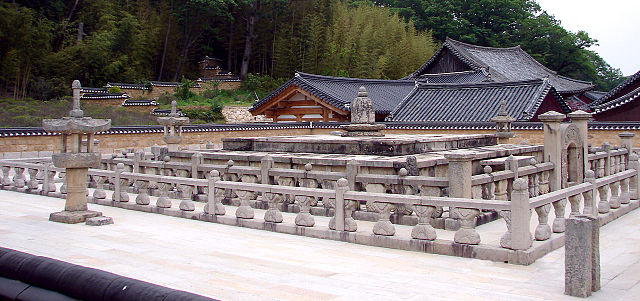Buddhist temples in Korea
Buddhist temples are an important part of the Korean landscape. Most Korean temples have names ending in -sa, which means "monastery" in Sino-Korean.
Many temples participate in the Templestay program, where visitors can experience Buddhist culture and even stay at the temple overnight.
Sacheonwangmun Beomeosa in Busan.
Daeungjeon Jeungsimsa in Gwangju.
Jonggak Guinsa.
Tongdosa
Beomeosa is one of the head temples of the Jogye Order of Korean Buddhism in Cheongnyeongnopo-dong, Geumjeong District, Busan, South Korea. Built on the slopes of the mountain Geumjeongsan, it is one of the country's best known temples.
The temple during the fall (2021)
Treasure 250 - Beomeosa Three Story Stone Pagoda built some time between 826-836, during the Silla era.
Treasure 434 - Beomeosa Daeungjeon, the main temple hall, built in 1614 after the temple was burned down during the Japanese invasions. Major remodellings of this building were undertaken in 1713, 1814 and 1871.
Tangible Cultural Asset 2 - Beomeosa Iljumun. The first gate to the temple, called the "One-Pillar Gate", because when viewed from the side the gate appears to be supported by a single pillar symbolizing the one true path of enlightenment which supports the world, built originally in 1614.








